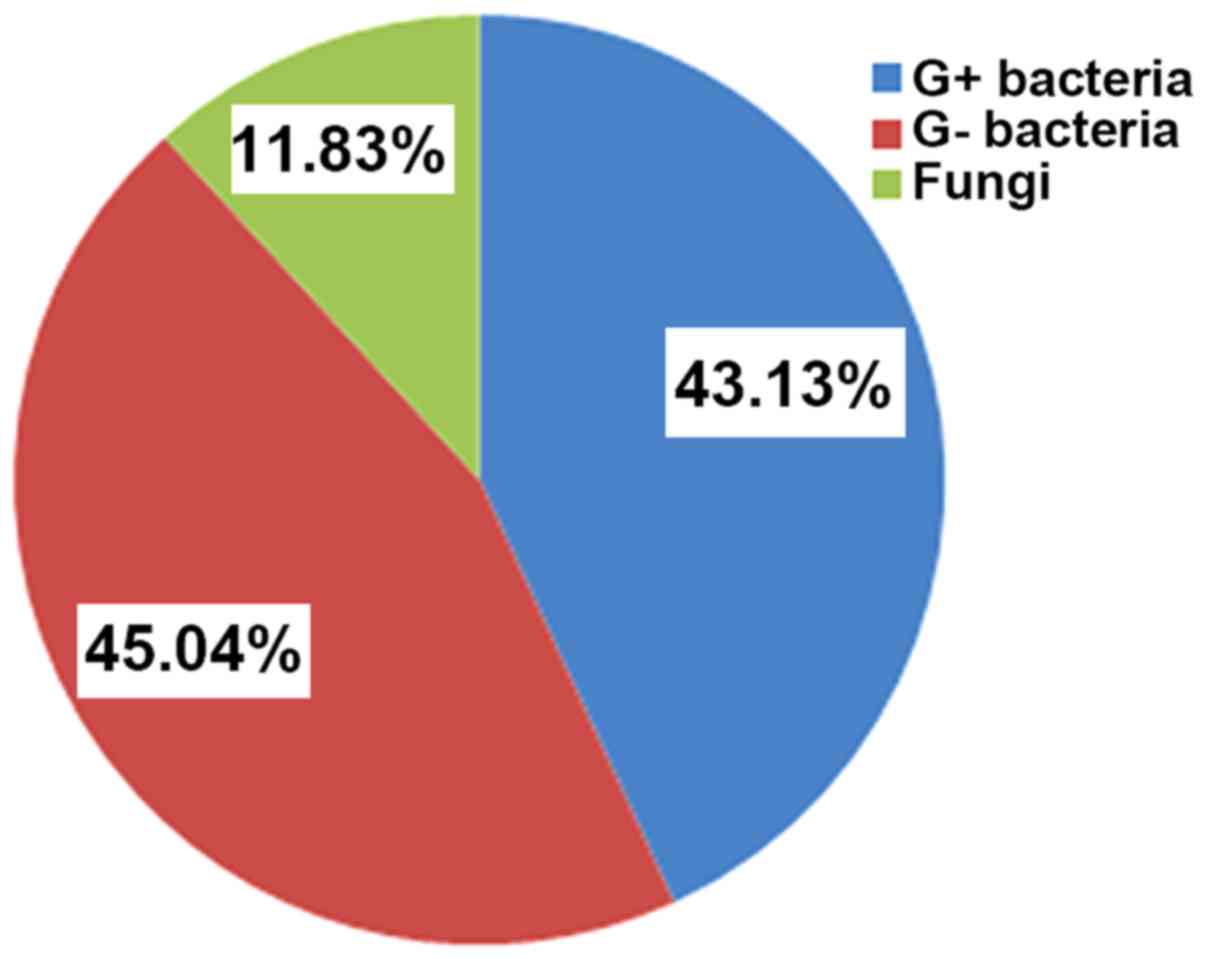|
1
|
Ismail H, Omar MA, Hisham AAN, Aris T,
Ambak R, Yusoff MFM and Lim KK: Undiagnosed type 2 diabetes
mellitus and its risk factors among malaysians: Findings of a
nationwide study. Int J Public Health. 6:677–684. 2016.
|
|
2
|
D'Emden MC, Shaw JE, Jones GR and Cheung
NW: Guidance concerning the use of glycated haemoglobin (HbA1c) for
the diagnosis of diabetes mellitus. Med J Aust. 203:89–90. 2015.
View Article : Google Scholar : PubMed/NCBI
|
|
3
|
Al-Rubeaan K, Al Derwish M, Ouizi S,
Youssef AM, Subhani SN, Ibrahim HM and Alamri BN: Diabetic foot
complications and their risk factors from a large retrospective
cohort study. PLoS One. 10:e01244462015. View Article : Google Scholar : PubMed/NCBI
|
|
4
|
Yusuf N, Omar MI, Zakaria A, Masnan MJ,
Abdullah AA, Kamarudin LM, Shakaff AYM, Thriumani R, Yeap EJ,
Othman A and Yasin MS: Rapid bacteria identification using
multivariate classifier on diabetic foot infection. J Med Imag
Health In. 5:1251–1254. 2015.
|
|
5
|
Dorresteijn JA, Kriegsman DM and Valk GD:
Complex interventions for preventing diabetic foot ulceration.
Cochrane Database Syst Rev. Jan 19–2010.(Epub ahead of print). doi:
10.1002/14651858.CD007610.pub2. View Article : Google Scholar
|
|
6
|
Klenerman L, McCabe C, Cogley D, Crerand
S, Laing P and White M: Screening for patients at risk of diabetic
foot ulceration in a general diabetic outpatient clinic. Diabet
Med. 13:561–563. 1996. View Article : Google Scholar : PubMed/NCBI
|
|
7
|
Lavigne JP, Sotto A, Dunyach-Remy C and
Lipsky BA: New molecular techniques to study the skin microbiota of
diabetic foot ulcers. Adv Wound Care (New Rochelle). 4:38–49. 2015.
View Article : Google Scholar : PubMed/NCBI
|
|
8
|
Hingorani A, Lamuraglia GM, Henke P,
Meissner MH, Loretz L, Zinszer KM, Driver VR, Frykberg R, Carman
TL, Marston W, et al: The management of diabetic foot: A clinical
practice guideline by the Society for Vascular Surgery in
collaboration with the American Podiatric Medical Association and
the Society for Vascular Medicine. J Vasc Surg. 63 Suppl 2:3S–21S.
2016. View Article : Google Scholar : PubMed/NCBI
|
|
9
|
Pickwell K, Siersma V, Kars M, Apelqvist
J, Bakker K, Edmonds M, Holstein P, Jirkovská A, Jude E, Mauricio
D, et al: Predictors of lower-extremity amputation in patients with
an infected diabetic foot ulcer. Diabetes Care. 38:852–857. 2015.
View Article : Google Scholar : PubMed/NCBI
|
|
10
|
Stappers MHT, Hagen F, Reimnitz P, Mouton
JW, Meis JF and Gyssens IC: Direct molecular versus culture-based
assessment of Gram-positive cocci in biopsies of patients with
major abscesses and diabetic foot infections. Eur J Clin Microbiol
Infect Dis. 34:1885–1892. 2015. View Article : Google Scholar : PubMed/NCBI
|
|
11
|
Messad N, Prajsnar TK, Lina G, O'Callaghan
D, Foster SJ, Renshaw SA, Skaar EP, Bes M, Dunyach-Remy C,
Vandenesch F, et al: Existence of a colonizing staphylococcus
aureus strain isolated in diabetic foot ulcers. Diabetes.
64:2991–2995. 2015. View Article : Google Scholar : PubMed/NCBI
|
|
12
|
Katz DE, Friedman ND, Ostrovski E, Ravid
D, Amrami N, Avivi D, Mengesha B, Zaidenstein R, Lazarovitch T,
Dadon M and Marchaim D: Diabetic foot infection in hospitalized
adults. J Infect Chemother. 22:167–173. 2016. View Article : Google Scholar : PubMed/NCBI
|
|
13
|
Reghu R, Padma UD, Sasankan V, Puthur S
and Jose J: A microbiological study of diabetic foot ulcer in a
south Indian tertiary care hospital. Int J Pharm Sci. 37:167–170.
2016.
|
|
14
|
Shin NR, Whon TW and Bae JW:
Proteobacteria: Microbial signature of dysbiosis in gut microbiota.
Trends Biotechnol. 33:496–503. 2015. View Article : Google Scholar : PubMed/NCBI
|
|
15
|
Otsuji N, Sekiguchi M, Iijima T and Takagi
Y: Induction of phage formation in the lysogenic Escherichia coli
K-12 by mitomycin C. Nature. 184:1079–1080. 1959. View Article : Google Scholar : PubMed/NCBI
|
|
16
|
Pitout JD, Nordmann P and Poirel L:
Carbapenemase-producing klebsiella pneumoniae, a key pathogen set
for global nosocomial dominance. Antimicrob Agents Chemother.
59:5873–5884. 2015. View Article : Google Scholar : PubMed/NCBI
|
|
17
|
Alexandrescu VA, Hubermont G, Philips Y,
Guillaumie B, Ngongang C, Vandenbossche P, Azdad K, Ledent G and
Horion J: Selective primary angioplasty following an angiosome
model of reperfusion in the treatment of Wagner 1–4 diabetic foot
lesions: Practice in a multidisciplinary diabetic limb service. J
Endovasc Ther. 15:580–593. 2008. View Article : Google Scholar : PubMed/NCBI
|
|
18
|
Serra R, Grande R, Scarcello E, Buffone G
and de Franciscis S: Angiosome-targeted revascularisation in
diabetic foot ulcers. Int Wound J. 12:555–558. 2015. View Article : Google Scholar : PubMed/NCBI
|
|
19
|
Sutton M, McGrath C, Brady L and Ward J:
Diabetic foot care: Assessing the impact of care on the whole
patient. Prac Diabetes. 17:147–151. 2000. View Article : Google Scholar
|
|
20
|
Sun P, Guo J and Xu N: Correlation between
diabetic lower-extremity arterial disease and diabetic neuropathy
in patients with type II diabetes: An exploratory study. Int J Clin
Exp Med. 8:1396–1400. 2015.PubMed/NCBI
|
|
21
|
Selvarajah D, Cash T, Davies J, Sankar A,
Rao G, Grieg M, Pallai S, Gandhi R, Wilkinson ID and Tesfaye S:
SUDOSCAN: A simple, rapid, and objective method with potential for
screening for diabetic peripheral neuropathy. PLoS One.
10:e01382242015. View Article : Google Scholar : PubMed/NCBI
|
|
22
|
Muthuppalaniappan VM, Sheaff M and Yaqoob
MM: Diabetic nephropathy. Medicine. 43:520–525. 2015. View Article : Google Scholar
|
|
23
|
Amin N and Doupis J: Diabetic foot
disease: From the evaluation of the ‘foot at risk’ to the novel
diabetic ulcer treatment modalities. World J Diabetes. 7:153–164.
2016. View Article : Google Scholar : PubMed/NCBI
|















